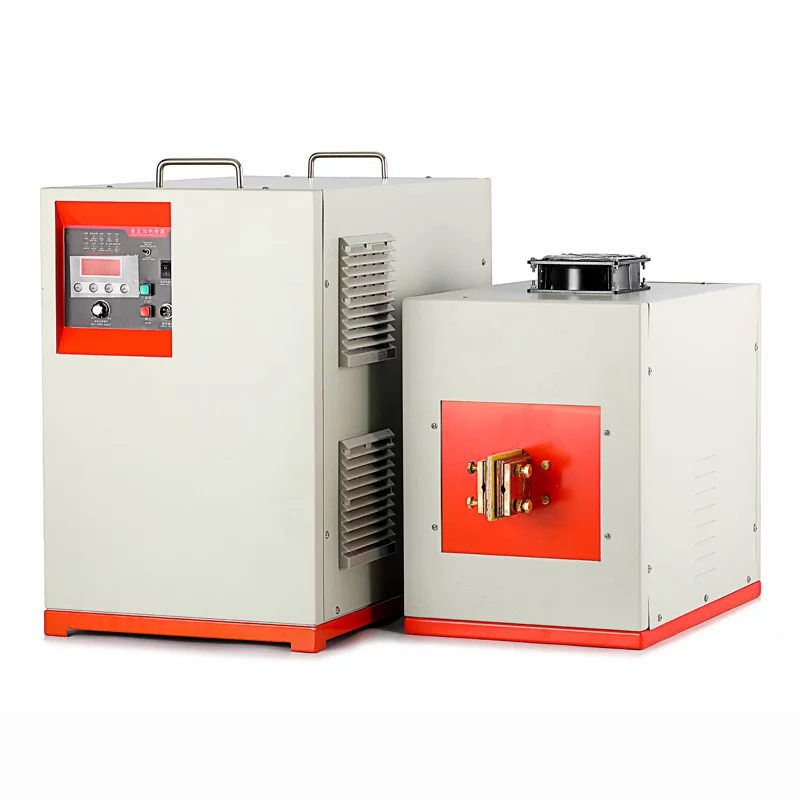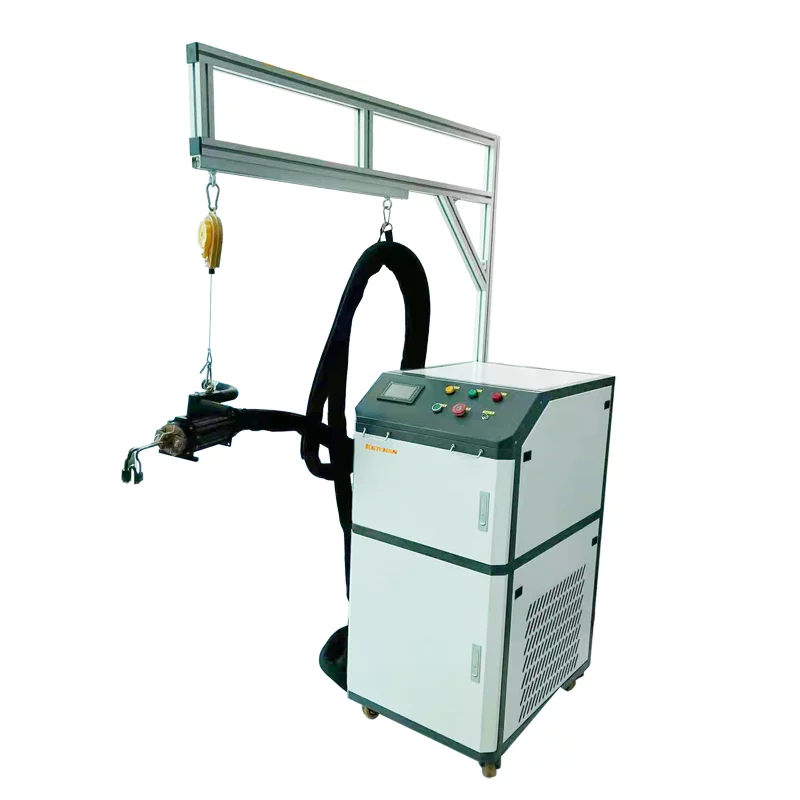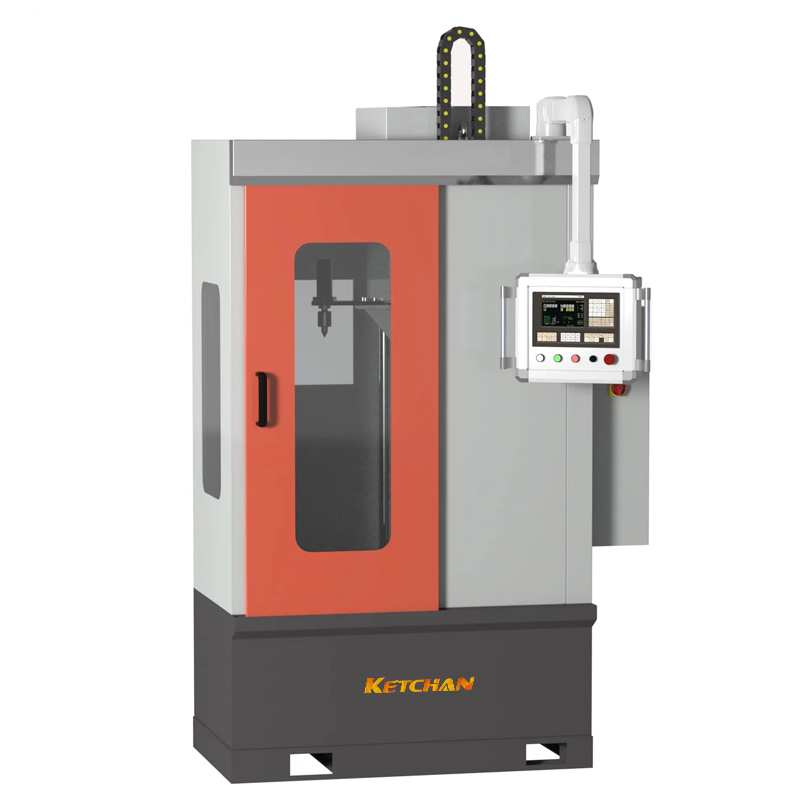Internal combustion engine valve is an important part of a car engine power within, especially the exhaust valve in high temperature, corrosive medium and long-term repeated shocks, and exhaust gas scour under the action of work, so should not only have good organization and strength, and high heat resistance and thermal stability, good corrosion resistance, resistance to bite, abrasion resistance and thermal conductivity, etc., its working conditions is very demanding. Due to the valve disc conical surface and valve seat ring repeatedly contact, it is required to have good wear resistance, and the valve rod end face contact with the CAM, the surface is required to have high hardness. Therefore, in order to meet the wear resistance of the conical surface and rod end, it is necessary to quench and temper the valve conical surface and rod end to obtain the required high hardness. Induction heat treatment is usually carried out after quenching and tempering of martensitic heat resistant steel.
This paper only analyzes the induction quenching technology of valve disc cone and rod, points out the quality problems in the production process, and puts forward the improvement measures, aiming at improving the induction quenching quality of the valve.
The application of induction heat treatment on the valve
1. Characteristics of induction heat treatment
Induction heat treatment is an advanced heat treatment technology with high productivity, no pollution of the environment, easy automation, and energy saving. This technology has been developing rapidly since its inception. The largest user of induction heat treatment technology is the field of auto parts.
Induction heat treatment technology has many advantages, such as high quality, high efficiency, energy saving, environmental protection, etc., which meets the needs of modern automobile production and rapidly improves the technical level.High frequency induction heating equipment, they are widely used in the field of auto parts such as a valve, rod, connecting rod, crankshaft, camshaft, gear, universal joint, bell housing and half shaft, etc., in which the valve rod end for continuous quenching, quenching or shock cone for automatic continuous operation become valve induction heat treatment of the most successful technology at home and abroad, won the favor of valve manufacturers, more than 100 domestic valve manufacturers have more than 5 high-frequency equipment. Jinan Ward Auto Parts Co., Ltd. has more than 30 sets of induction quenching equipment (or continuous production lines), with an annual output of induction quenching valves of more than 20 million, making it one of the manufacturers with the largest output and the largest export volume among China’s valve manufacturers.
2. Basic requirements for induction quenching of internal combustion engine valves
Valve (after tempering treatment) for induction hardening heat treatment, the purpose is to satisfy the rod end face (or cone), wear-resisting, the internal combustion engine intake and exhaust door technical conditions “(GB/T23337-2009) and the condition of automobile engine valve technology (QC/T469-2002), have pointed out that rod end after surface quenching hardness should be 48 HRC, or when the rod end minister > 4 mm, the depth of hardening layer should be 2 mm or higher) or the depth of the hardening layer should be 0.6 mm or more. The hardened layer of the disc cone after surface quenching shall be ≥1.5mm, and its hardness value shall conform to the requirements of the drawing. The grain size of the rod end and the cone quenched by induction shall be smaller than grade 8. It can be seen that the induction hardening of the valve cone and rod is required by the standard and is an indispensable heat treatment means to improve the valve surface hardness.
The technical requirements of valve induction heat treatment, the form, and selection of induction coils
1. Technical requirements
The technical requirements for induction quenching of valves include surface (or end face) hardness, hardened layer (quenching) depth or length, metallographic structure, distortion, and appearance, etc.
(1) Taper quenching requires that the valve taper (valve port) is repeatedly fitted to the valve base, and its surface is required to have high hardness and good wear resistance. Induction quenching can meet its requirements. The taper hardness of taper quenching is 45~58HRC, the depth of hardening layer is generally ≥1.5mm, the grain size is more than 8 grades, and the quenching technology requirement of a certain valve taper is required.
(2) the rod end quenching requirements for the technical requirements for the quenching of the valve stem 50 ~ 60 HRC hardness, the depth of hardening layer 2 mm or greater, the fine grain size in a magnitude 8, etc., the process requires a rod of hardening, copying impact hardening, rod end quenching, figure 2, figure 3, figure 4 for some valve stem hardening, impact of profile bar and rod end quenching technology requirements.
2. Form and selection of induction coils
(1) Taper quenching inductor adopts a special inductor for taper quenching. Generally, there are two types of taper quenching inductor used by the valve: a continuous inductor and a single-coil inductor, whose shape is determined according to the cone surface of the valve disc.
Cone quenching principle of the selection of induction coil, induction coil inside along with gaps between the valve cone is 1.5 ~ 3 mm, the valve plate is rotating in the process of heating, specific parameters such as current, voltage, frequency, heating temperature and heating time is set by process test, the hardness and depth of hardening are to meet the qualified, requirements, the grain size is fine in the 8th grade level on cone valve usually after quenching in 160 ~ 200 ℃ low-temperature tempering and high temperature tempering treatment, to stabilize the organization, reduce internal stress and brittleness.
(2) Rod end quenching inductor Special inductor is used for rod end quenching of valve. This design takes into account the different technical requirements, and the process parameters are also quite different, in order to meet the requirements of different hardness and quenching length of the rod. Impact and copy quenching inductor. Rod ends continuous quenching and continuous quenching and tempering inductors are widely used with high production efficiency.
Quality control of valve induction heat treatment
1. Process quality control
In order to meet the technical requirements for the quality of the valve after induction quenching, the valve should be heated and cooled by induction quenching on the cone surface and the rod end. The structure, shape, and size of the inductor and the sprinkler should meet the use requirements. According to the process test results, determine the best process parameters, etc., and follow the following requirements:
(1) To determine the voltage, current, heating temperature, heating time or feeding speed, etc.
(2) Temperature, pressure, flow, the concentration of the medium-range, and cooling time.
(3) Appearance of inductor and cooling spray structure meet the requirements.
2. Quality inspection methods
At present, the hardness, length or depth, grain size, and other inspection methods of the valve rod and the cone surface shall adopt the following requirements:
(1) Rockwell/dimensional hardness inspection and quenching length shall be conducted on the outside circle of cone or rod.
(2) For those requiring Vickers hardness (plane) inspection, the hardness and length shall be checked according to the requirements after polishing on the cut cone or rod plane.
(3) The inspection of grain size shall be carried out after polishing and corrosion as required.
The latest trend and development of valve induction heat treatment
1. Latest developments
(1) Quick annealing treatment after friction welding of the valve between the head and rod can be carried out for wire processing. The valve is heated in the continuous inducer, and the cumbersome process of centralized annealing of the valve after welding is eliminated to realize energy saving and consumption reduction. International valve manufacturers began to apply the technology in some valve production lines.
(2) It is used for the heating of the alignment front of the neck of the head rod welding valve, especially for the valve which is not allowed to be cold straightened or hammer the disk (manual hammer, easy to cause the disk to drop or there is a hidden danger), it can eliminate the occurrence of early valve failure of a diesel engine.
(3) At present, the austenitic heat-resistant steel bar is the raw material for valve manufacturing, which is made of hot-rolled material through high temperature solid solution treatment. In order to ensure valve performance, solid solution treatment is mostly used in an electric furnace, gas furnace, salt bath furnace, etc..Induction heating solid solution treatment can achieve the purpose of traditional solid solution treatment. Super audio power supply is used to achieve good electrical efficiency at the temperature below the Curie point. When the solid solution treatment temperature is 1100~1150℃, the electric energy consumption per ton of steel is 350~400kW•h, and the electrical efficiency of the heating system can reach about 65%.
2. Development trends
(1) Develop automation to reduce labor intensity and improve production efficiency.
The valve adopts automatic feeding and feeding for quenching treatment of conical surface and rod end. When abnormal or failure occurs, the equipment automatically alarms, which fundamentally solves the problem of relying on operators to do tedious repetitive work, and the product quality is stable and the production efficiency is obviously improved.
(2) Develop towards an intelligent direction, carry out prevention and control, and realize alarm, separation of high and low-temperature products, and other functions.
(3) After the program is input according to the process requirements, it is controlled by a computer. The interface of the operation screen is clear, and all kinds of action instructions can be completed by touching the screen, and personnel can conduct an inspection, so as to reduce the influence of human factors and ensure the stability and consistency of product quality.
(4) Real-time monitoring of the running state and parameters of the power supply (such as voltage, current, power, frequency, temperature, etc.), truly realizing real-time online monitoring.
(5)Computer-simulated induction heat treatment has been carried out in some enterprises and research institutes. In this way, the virtual trial production of new technology will replace the tedious time-consuming field process adjustment.





